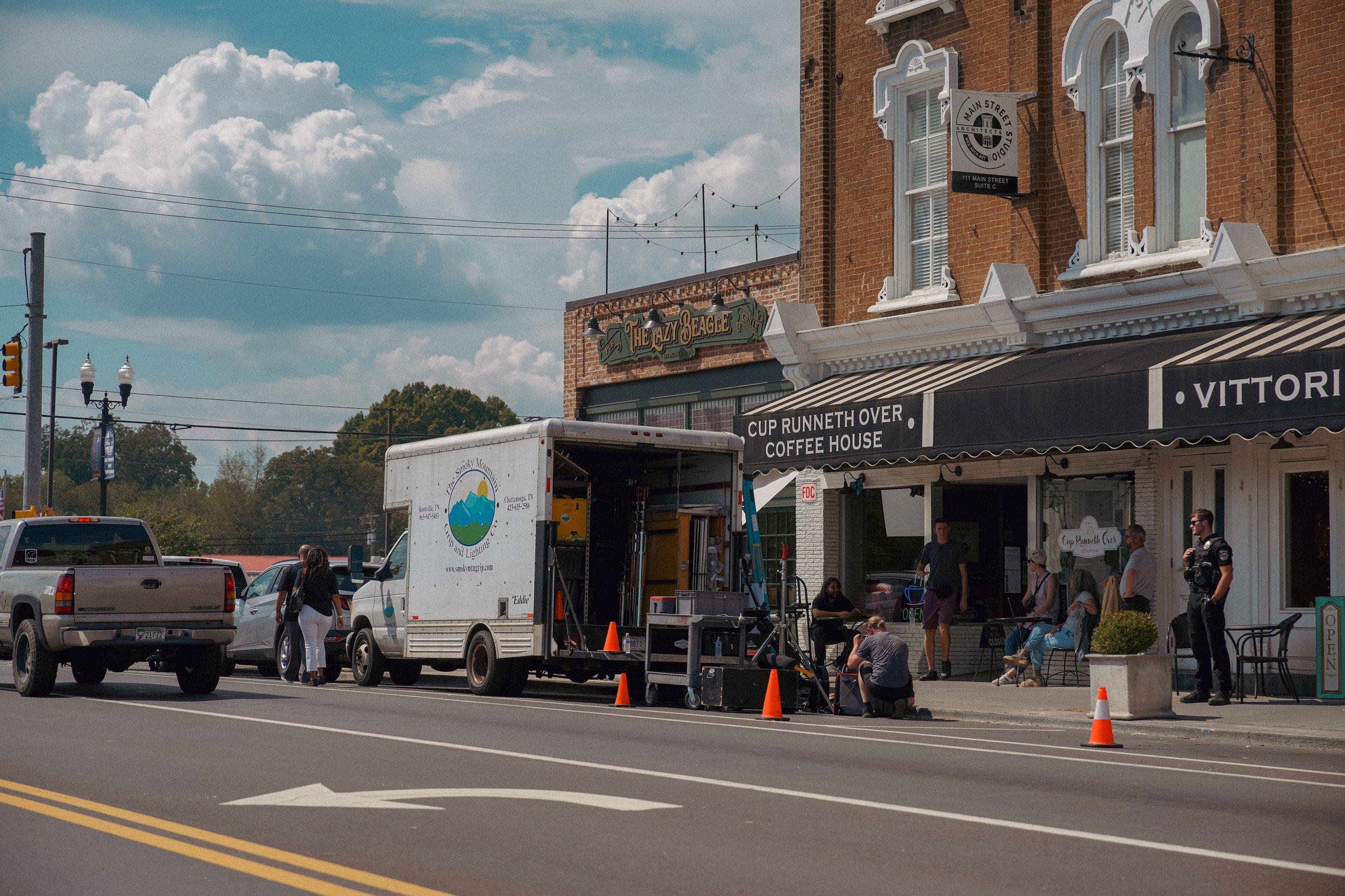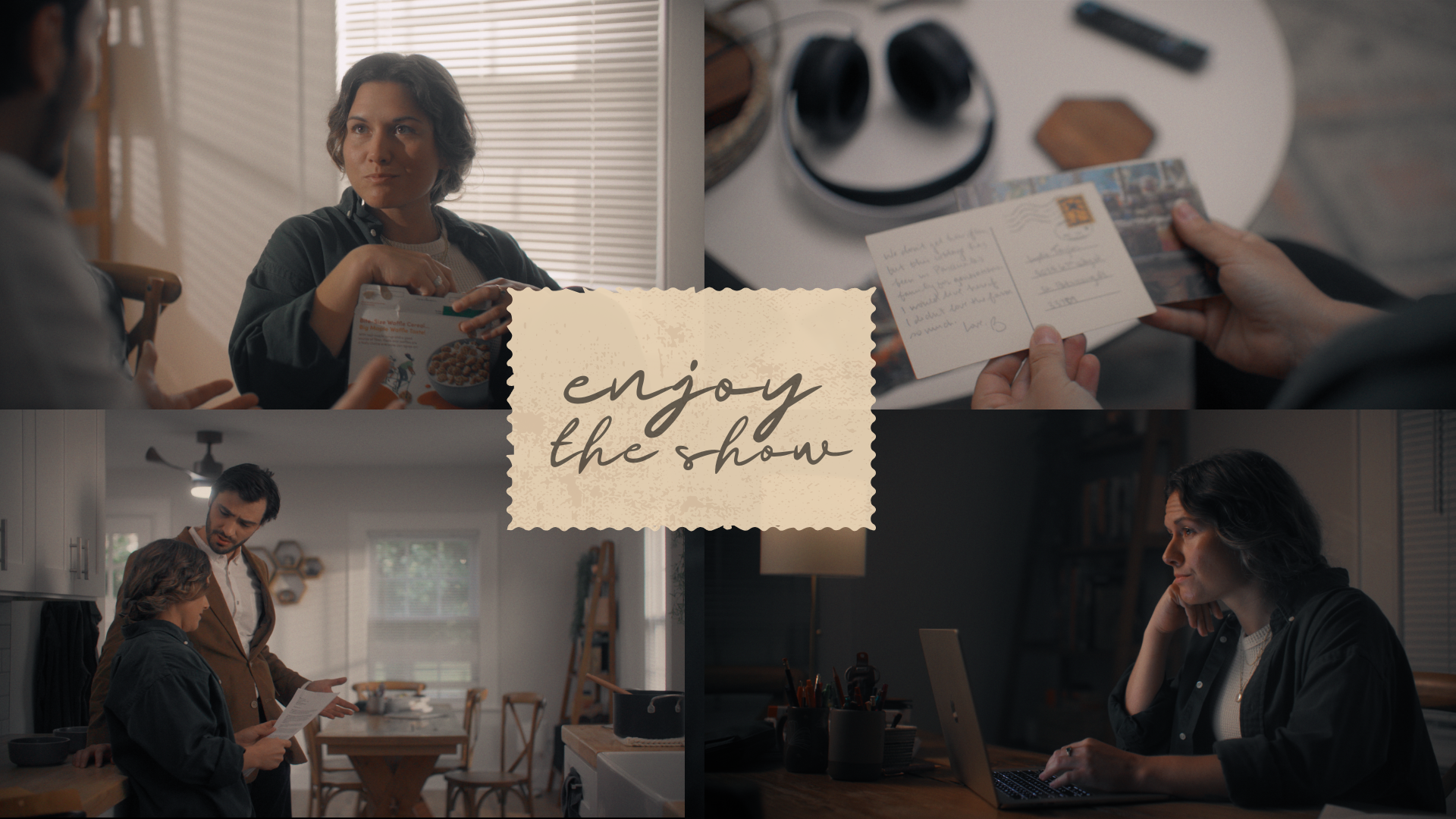
from the hearts & smarts desk

Film Tourism + Regional Indie Filmmaking Drive New Visitors to Tennessee Small Town
a/b studios’ first film tourism campaign is live, and it’s setting a precedent for future projects! Regional indie filmmaking is more than telling local stories—it can boost small-town economies through film tourism. By marketing a film’s setting as a destination, filmmakers create long-term value for the communities they film in. A strong small-town campaign turns a movie into a movement, giving audiences a reason to visit.

Surprise: We Made a 2nd Movie! + What's Next in 2025
Making one indie film is hard enough, but making two back-to-back is a whole new challenge. With How to Get the Girlnow in post-production, the focus shifts to what comes next in 2025. Festival runs, audience building, and laying the groundwork for future projects will shape the year ahead. It’s not just about making films—it’s about creating momentum that lasts.

The next chapter in Lydia's story
Lydia’s story isn’t over—it’s evolving. From a short film to something bigger, her journey is taking shape in unexpected ways. The next steps involve deepening her world, expanding her story, and finding the right path forward. Learn how a/b studios’ first film Lavender Fields Forever is growing into the feature vision the community always knew was possible.

Rethinking the Viability of the Big Budget Blockbuster in the Algorithmic Age
Panic over a lackluster opening to the Summer Blockbuster season and the still elusive movie “market recovery” are not the headlines that will drive audiences back to the cinema. Maybe they should take a page out of the Barbenheimer book and become the most popular thing on the internet.

We Made a Movie! + What it Took to Make it Happen
Making a movie takes persistence, problem-solving, and a team willing to push through every challenge. Lavender Fields Forever came together through careful planning, creative problem-solving, and a lot of hard work. From writing to production, every step brought excitement and uncertainty. In the end, starting was the hardest part, but finishing made it all worth it. Read how the a/b studios’ team went about make our first short film and the lessons learned along the way.

Investing vs Crowdfunding & why I chose the latter for a/b studios
Funding a film means weighing creative control, audience engagement, and financial sustainability. Investors bring resources but often come with expectations, while crowdfunding builds community but requires constant outreach. The right choice depends on the project, the filmmaker’s priorities, and the long-term vision for the work. Finding the right balance is as much a strategic decision as it is a financial one. Read some of our team’s considerations when choosing our fundraising method and how we plan to move forward.

We’re making a movie!
Starting a new film means diving into months of planning, problem-solving, and creative decisions. From assembling the right team to refining the script, every step lays the foundation for what’s to come. The process is unpredictable, but that’s part of the thrill. With the pieces coming together, the real work is just beginning. Step into the creative process with the a/b studios team as we bring our first proof-of-concept short into production!

What is a “story-to-cinema pipeline,” and why does it matter?
A “story-to-cinema pipeline” connects filmmakers and their stories with the breadth of collaborators necessary to bring a concept to the big screen. Being outside the “major markets” ecosystem (LA, NYC, Atlanta, etc.), we lack a cohesive network of individuals making movies, either distributed geographically or simply disconnected. Learn more about how a/b studios is building a story-to-cinema pipeline in the Southeast and Appalachia.

Best Short Script: Austin Under the Stars Festival 2023
My first short script ‘tis the damn season won Best Short Script at the 2023 Austin Under the Stars Film Festival in Austin, TX.
